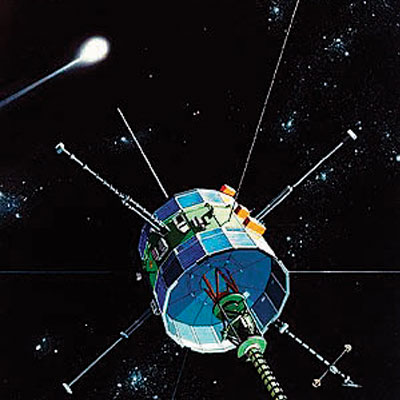.

India’s Mars mission is suffering from birth pangs. A comet heading towards the planet could derail Indian Space Research Organisation’s (Isro) project, worth Rs450 crore, scheduled to take off in October-November this year.
Scientists are now exploring the possibility of postponing the launch to allow the comet to pass by Mars before the spacecraft lands.
The comet — C/2013 A1 — is approaching the red planet at a speed of 2 lakh km/hour and has a probability of 1 in 8,000 to strike Mars.
As per current trajectory projections, calculated by US’ National Aeronautics and Space Administration (Nasa), the comet will be closest to Mars at a distance of 3 lakh km. But the planet will be engulfed in the tail of the comet — extending to millions of kilometres — which will be on Mars’ sunward side.
The tail of a comet points away from the sun due to radiation effects.
The comet poses a problem because no one knows its precise properties, and therefore, the effects it’ll leave behind. It was discovered only on January 3 this year by Rob McNaught at the Siding Spring Observatory in Australia. And our mission will reach the planet just a month before the comet’s arrival.
Isro scientists admit that India’s Mars mission will be affected by the comet.
One of the main objectives of the mission is to detect methane in the Martian atmosphere with a methane sensor for Mars (MSN). The sensor will be one of the five payloads on board the unmanned spacecraft, which is expected to orbit the planet at an altitude of 500km after covering a journey 5.46 crore km through space in nine months.
A senior scientist working on the Mars mission explains how the comet could scuttle the project.
“Most comets have methane, and there is a good chance that our MSN payload may confuse the methane it detects from the comet as that of Mars and transmit wrong data. Such data will mislead us. Even Nasa is wary.”
Prof Tushar Prabhu, dean of Bangalore-based Indian Institute of Astrophysics (IIA), agrees that the comet’s tail, which is packed with methane, will play the spolier. He hopes that Isro will take a guarded decision on the mission.
M Annadurai, Mars mission project director, is non-committal on whether the launch date would be pushed ahead, saying it all boils down to the comet’s trajectory. “It’s too early to say anything right now....but we are in touch with Nasa scientists on this.”
Although he neither denies nor confirms the rescheduling, he gave enough hints that the current date — November 27 — of the launch could be changed.
Isro had zeroed in on three launch windows for the mission — November 2013-January 2014, January-April 2016; and April-May 2018.
Isro scientists are not sure if the launch date could be postponed within the current launch window (November 2013-January2014) or if they’d have to wait till 2016 or 2018.
But Prof UR Rao, one of India’s staunchest supporters for exploring and colonising Mars and who is also chairman of the governing council of Isro’s Ahmedabad-based Physical Research Laboratory (PRL), suggests that “we have to take some risks”.
“There is still time [to change plans],” says IIA’s Prof Prabhu. “I hope Isro scientists take the right decision on time. It will be a difficult decision.”
The presence of methane on Mars is indicative of two things — signs of life or possibilities of chemical reactions, just like on Earth.
Methane was faintly detected on Mars a few years ago. But its presence could not confirmed as the Nasa rover then could detect only a larger volume of the gas at a go — about several parts per billion.
Prof JN Goswami, director of PRL, says India’s MSN payload can detect even faint amounts — 10 parts per billion.
The comet has taken even Nasa by surprise. It, too, will send out a craft — MAVEN (Mars Atmosphere and Volatile Evolution) — to study Mars’ upper atmosphere in November this year.
The launch was planned much ahead of C/2013 A1’s discovery and its close Mars fly-by. It will reach the planet around the same time as India’s spacecraft.
Isro Mars probe, the victim
Scheduled to be launched on November 27, 2013
Will carry five payloads, including those to detect methane and hydrogen
Will take nine months to reach Mars, which is 54.6 million kilometres away
The problem
Mars will be within the comet’s tail from October 19, 2014, but no one knows for how long
This would confuse the spacecraft-borne detectors about the source of the gases they are trying to detect
The entire Rs450-crore mission could be affected because the comet’s properties could be confused with those of Mars by the spacecraft’s sensors
.
Quelle: dna
5908 Views
